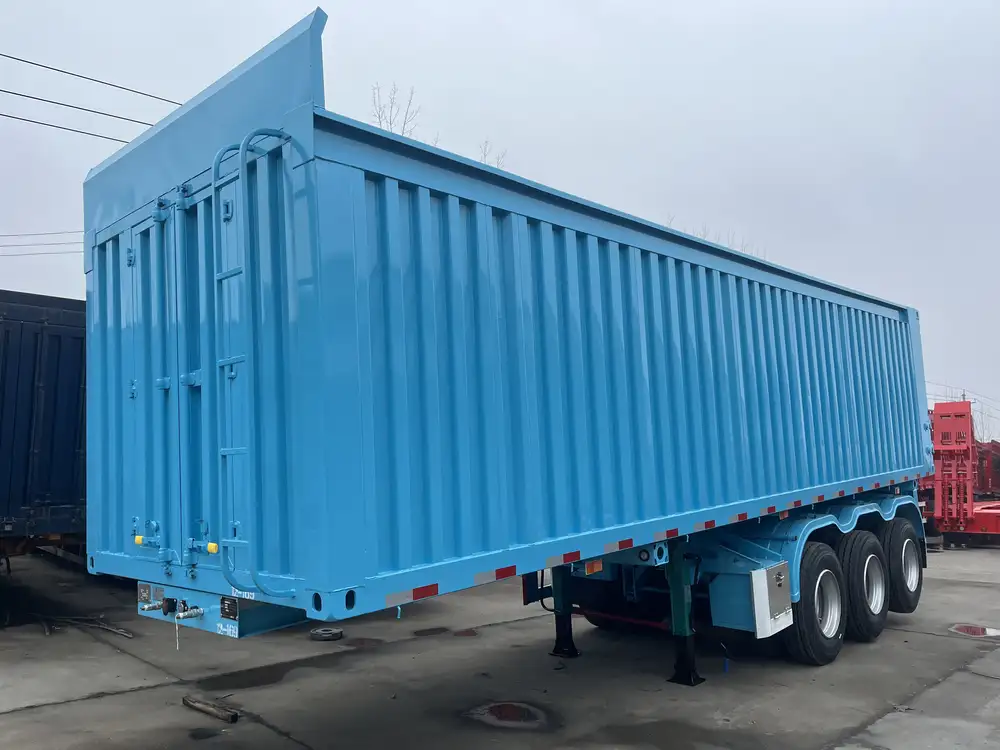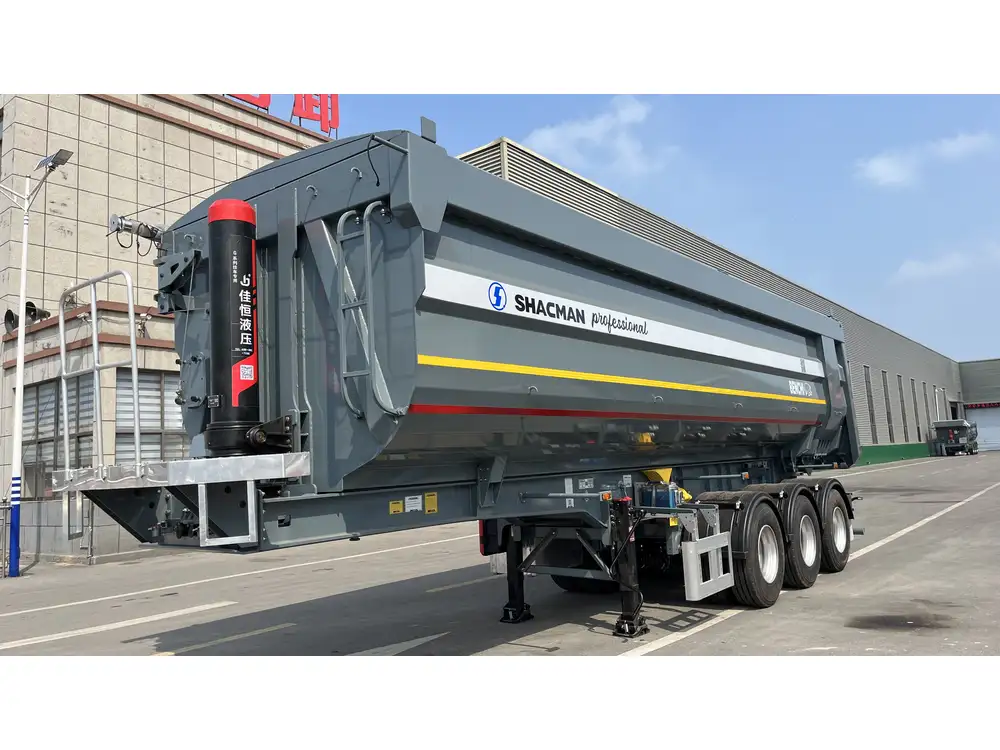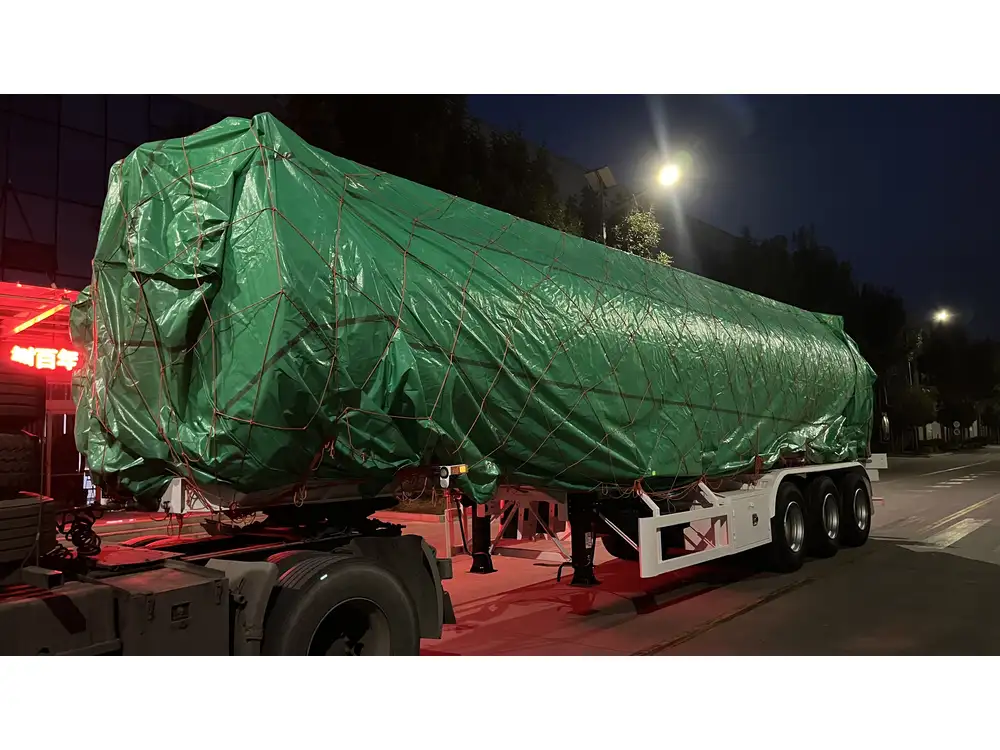Introduction: The Charm of Vintage Trailers
In the realm of trucking and logistics, few vehicles evoke nostalgia quite like the 1972 40-foot semi-trailer. With its robust build and classic design, this semi-trailer has not only stood the test of time but has also become a collectible item for many enthusiasts and businesses alike. Yet, a question often arises: How much is a 1972 40-foot semi-trailer worth? This article aims to provide a comprehensive guide, dissecting the factors that influence the value of this unique piece of equipment.
Factors Influencing the Value of a 1972 40-Foot Semi-Trailer
To accurately assess the worth of a 1972 40-foot semi-trailer, several key factors come into play:

1. Condition of the Semi-Trailer
The physical condition of the semi-trailer is paramount. Key sub-factors include:
| Condition | Description | Value Impact |
|---|---|---|
| Excellent | Well-maintained, minimal wear, fully functional | High value |
| Good | Minor cosmetic issues, fully operational | Moderate value |
| Fair | Needs repairs, functional but may be costly to maintain | Lower value |
| Poor | Significant repairs needed, non-functional | Lowest value |
2. Originality and Modifications
An original 1972 model with its original components typically commands a higher price. Modifications can either enhance or diminish value, depending on the quality and relevance of those changes.
3. Documentation and History
Complete documentation, including maintenance records and previous ownership information, greatly increases value. A trailer with a storied past, especially if connected to significant events or companies, may be more desirable.

4. Market Demand
The market for vintage trailers is niche but growing. Demand can fluctuate based on trends in the trucking industry, collectible interest, and economic factors. Currently, vintage trucks and trailers are increasingly popular among collectors and businesses looking for retro designs.
5. Geographic Location
The location where the semi-trailer is being sold can influence its price, with urban areas often commanding higher prices due to the demand for logistics solutions.
6. Brand Reputation
Manufacturers with a history of quality and reliability often ensure a better resale value. Investigating whether the trailer is from a renowned manufacturer could positively affect its worth.

7. Trailer Type and Specifications
Different uses (e.g., flatbed, refrigerated) and specifications (e.g., weight capacity, materials) will affect value. The type of cargo the trailer is designed to carry also plays a crucial role.
8. Current Market Listings
Analyzing current listings for 1972 40-foot semi-trailers can provide insight into market value. We recommend taking a look at platforms such as:
- Online Auction Sites: eBay, BidSpotters
- Specialized Marketplaces: TruckPaper, Commercial Truck Trader
- Local Classifieds: Craigslist, Facebook Marketplace
9. Economic Factors
Regional economic conditions can affect pricing. For instance, in areas where logistics and freight are booming, prices may soar due to increased demand.

Estimating the Value: A Comprehensive Approach
With an understanding of the factors influencing value, we can derive an approximate range for the worth of a 1972 40-foot semi-trailer. Typically, prices range from $5,000 to $20,000. Let’s break this down further:
Price Breakdown Based on Condition
| Condition | Estimated Price Range |
|---|---|
| Excellent | $15,000 – $20,000 |
| Good | $10,000 – $14,500 |
| Fair | $5,000 – $9,500 |
| Poor | $1,000 – $4,500 |
Value-Added Considerations: Enhancing Worth

Maintenance and Upgrades
Investing in maintenance and minor upgrades can significantly increase resale value. Some suggestions include:
- Body Repairs: Fixing dents and rust spots can enhance aesthetics.
- Modern Equipment: Upgrading to modern braking systems or lighting can improve safety and appeal.
- New Tires: Ensuring the trailer has new, quality tires enhances appeal.
Certification
Obtaining certifications, such as DOT inspections or safety checks, can add credibility and reassurance for potential buyers.
Aesthetic Appeal
Basic cosmetic improvements—like a fresh coat of paint or new decals—can enhance the visual appeal, directly affecting the selling price.

Common Pitfalls to Avoid
While assessing value, there are several pitfalls to avoid:
1. Overestimating Condition
Many sellers overrate the condition of their trailers due to emotional attachment. Objective evaluations by a third party can be beneficial.
2. Ignoring Market Trends
Failing to stay updated on market trends can lead to mispricing. Analyze recent sales and price changes to remain competitive.

3. Underestimating Demand
Being unaware of the current demand for vintage trailers can lead to setting a price that’s too low, ultimately resulting in a loss of potential profit.
4. Skipping Documentation
Neglecting to keep thorough documentation can deter potential buyers. Ensure that all necessary paperwork is organized and accessible.
5. Pricing Without Research
Basing prices solely on anecdotal evidence can lead to inaccuracies. Use reliable datasets and listings to inform pricing strategy.

Real-Life Case Studies
Case Study 1: Successful Sale of an Excellent Condition 1972 Trailer
Details: A well-maintained 1972 40-foot semi-trailer in excellent condition sold for $18,500.
- Condition: Fully refurbished, original parts retained, and a complete maintenance log.
- Market Insight: Sold during a surge in demand for vintage trailers among collecting enthusiasts.
Case Study 2: Struggling to Sell a Poor Condition Trailer
Details: A 1972 semi-trailer in poor condition received no offers despite being listed for several months.
- Condition: Major repairs needed, rusted frame, and missing documentation.
- Market Insight: Underestimated repair costs and overvalued asking price led to lack of buyer interest.

A Guide to Selling Your 1972 40-Foot Semi-Trailer
1. Prepare for Sale
- Clean and refurbish the trailer.
- Gather all documents that prove its history and condition.
2. Set a Realistic Price
Utilize the price ranges discussed earlier, taking into consideration the specific factors that affect your trailer.

3. Create Compelling Listings
Highlight the unique selling points in your advertisements, including great condition, historical significance, or useful modifications. Use high-quality images.
4. Attend Auctions and Shows
Participating in vintage truck shows and auctions can expose your trailer to a niche market eager to make purchases.
5. Network with Collectors
Utilize online forums, social media, and local car clubs to connect with potential buyers who have a specific interest in vintage semi-trailers.

Conclusion: The Vintage Appeal of 1972 40-Foot Semi-Trailers
Determining how much a 1972 40-foot semi-trailer is worth involves assessing various factors such as condition, originality, market demand, and documentation. With a comprehensive grasp of these elements, not only can you set a competitive price, but you can also maximize your investment in this nostalgic piece of machinery. By making informed decisions and avoiding common pitfalls, you can emerge as a savvy seller in the vintage trucking market, ensuring that your semi-trailer finds its rightful value in today’s dynamic landscape.



